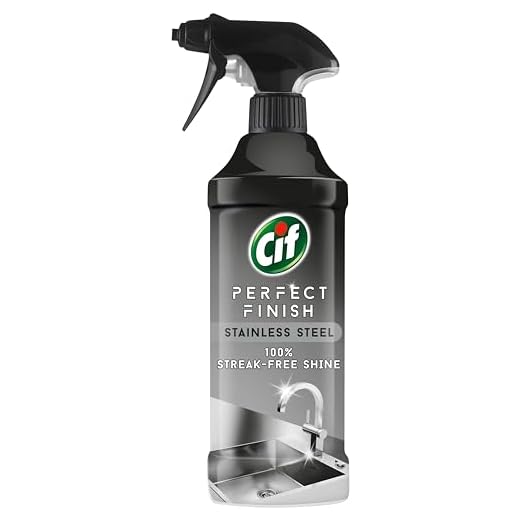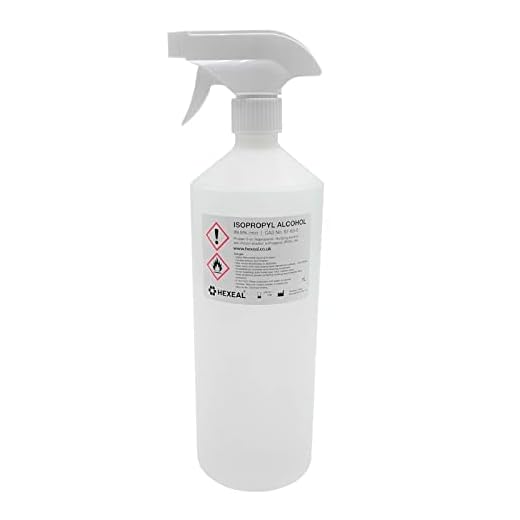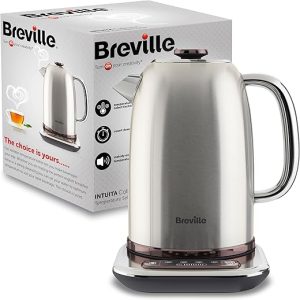Why I Clean My Stainless Steel Fridge (And You Should, Too)
I clean my stainless steel fridge regularly to remove smudges, prevent corrosion, and keep finishes looking professional. This six-step routine is simple, effective, and requires minimal time and effort, honestly.
What I Use and Why It Matters
I use:
- soft microfiber cloths
- mild dish soap
- white vinegar
- isopropyl alcohol
- oil based stainless polish or olive oil
- spray bottle
- soft toothbrush
- gloves
- patience; follow the grain
Step 1 — Prep the Area and Gather Supplies
Empty the fridge exterior of magnets, notes, and detachable bins — I remove everything so I can access every inch of stainless steel. Unplug the fridge or switch off its power if I’ll be cleaning near seals, and lay down a towel to catch drips; once, a stray splash soaked a wooden floor until I started using a towel.
Gather supplies and set them within reach:
Supplies
- Microfiber cloths (one for cleaning, one for drying)
- Spray bottle
- Mild dish soap
- White vinegar
- Soft brush (old toothbrush or small scrub brush)
Position myself with good lighting so I can spot fingerprints and streaks. Test any cleaner on an inconspicuous corner and keep a separate cloth for polish to avoid cross-contamination.
Step 2 — Mix Safe, Effective Cleaning Solutions
Mix one part mild dish soap with three parts warm water in a spray bottle for everyday cleaning; I spray the cloth, not the fridge, to avoid drips.
Prepare a 1:1 white vinegar and water solution for fingerprint-prone areas — vinegar cuts oils, evaporates quickly, and leaves fewer streaks.
Use 70% isopropyl alcohol diluted slightly with water when I need disinfecting, and wipe quickly so it doesn’t sit on the finish.
Quick reference
- Everyday: 1 part dish soap : 3 parts warm water
- Fingerprints: 1:1 white vinegar : water
- Disinfect: 70% isopropyl alcohol diluted slightly
Avoid bleach, powdered or abrasive cleansers, or anything that can etch stainless; keep solutions room-temperature and never mix vinegar with bleach or citrus cleaners.
Step 3 — Wipe with Technique: Follow the Grain
Work top-to-bottom and follow the metal grain to avoid streaks and halos.
Spray a light mist of the soap solution onto a microfiber cloth rather than the fridge to prevent pooling near seals.
Wipe in short, consistent strokes along the grain, applying gentle pressure to lift fingerprints and sticky spots.
Use a soft toothbrush dipped in solution for crevices and gasket edges, then rinse those areas with a damp cloth.
Let tough spots (dried spills) dwell 30–60 seconds with a vinegar or alcohol wipe; do not use scrubbing pads.
Quick tips
- Cloth: microfiber — not paper towels
- Pressure: gentle, consistent strokes
- Spot treatment: short dwell, then wipe clean
Rinse with a clean damp cloth to remove residue, then buff dry with a fresh microfiber cloth following the grain.
Focus on handles and high-touch areas, and finish brushed surfaces with a tiny dab of oil or polish, buffing lightly until reflections look uniform.
Step 4 — Deep Clean Seals, Trays, and Coils
Remove any detachable bins — I wash them in warm, soapy water, rinse, and dry completely before returning them. Gently pull back door gaskets and scrub trapped grime with a soft brush or toothbrush and mild soap; rinse with a damp cloth and dry the gasket thoroughly to prevent mold before reseating.
Check and empty the drip tray (if accessible) and sanitize it with diluted vinegar (1:1 vinegar:water), then dry.
Unplug the fridge and consult the manual, then vacuum or brush accessible condenser coils at the back or beneath the unit to improve efficiency — use a coil brush or vacuum attachment.
Place an open box of baking soda inside for odor control. Inspect the water filter, wipe the ice-maker assembly with a damp cloth, and adjust the fridge leveling so doors seal and compressors run quietly.
Step 5 — Polish Smartly for a Lasting Finish
Reserve polishing for last. For mirror-finish stainless I use a streak-free glass cleaner sparingly; for brushed finishes I prefer an oil-based polish or a drop of olive oil on a microfiber cloth.
Place a small amount on the cloth — never on the appliance — and work with the grain in slow, overlapping passes. Less is more: excess oil attracts dust.
- Mirror finish: use a streak-free glass cleaner; spray the cloth, not the surface.
- Brushed finish: use a tiny drop of olive oil or a commercial oil-based polish.
- Spots: treat water spots with 50:50 vinegar and water applied briefly, then buff.
Buff vigorously with a clean, dry cloth until reflections are even and smudges vanish. Avoid abrasive pads, steel wool, and polishing compounds unless the manufacturer allows them. After polishing I redo handles and touch points with a sanitizing wipe to finish. I polish only when necessary — usually monthly — and keep a cloth handy for quick daily wipe-downs. Avoid colored cleaners; they stain.
Step 6 — Maintain a Simple Routine and Troubleshoot
Keep a damp microfiber cloth near the fridge — I wipe handles and high-touch areas after meals to stop fingerprints before they set.
Store cleaning cloths separately; rinse them well and air-dry to avoid lint and mildew.
Rinse and rotate cloths weekly so one is always ready.
Follow this simple schedule:
- Wipe daily: quick pass on handles and dispenser areas.
- Wipe weekly: full exterior with your mild cleaner.
- Polish monthly: buff surface and inspect gaskets.
- Check quarterly: vacuum coils, swap baking soda, and verify filters.
Consult the manufacturer before using stronger treatments on stubborn stains.
Document any unusual noises or leaks after cleaning.
Schedule a gentle seasonal deep clean and always test new products on a hidden spot first.
Finish Strong: A Little Care Goes a Long Way
Follow these six steps regularly and I guarantee your fridge will stay streak-free, sanitized, and protected; try it, share your results, and start your simple maintenance routine today right now.










17 comments
Ben
Haha, this made me realize I’ve been neglecting step 6 (maintenance). I did a quick cleanup today and the difference is ridiculous. One tip: keep a small spray bottle under the sink with your mix so it’s easy to grab for quick touch-ups. Saved me hours in the long run.
Also, nice inclusion of the “why” section — motivation matters!
DanCC
Love that — convenience is the key to routine. A ready-to-go spray bottle is the single best maintenance hack.
Priya Patel
I keep mine in the fridge door shelf (in a sealed container) so it’s always on hand. Works well for quick cleanup after cooking.
Lena
I gotta admit, step 1 (prep area) felt unnecessary at first but it saved me from a mess. Placing towels under the fridge when I cleaned the coils = genius.
Big fan of the “Finish Strong” note — small routine makes a big difference. 👍
DanCC
Exactly! Little prep steps often prevent the biggest headaches later on. Glad it helped, Lena.
Tom Alvarez
Towels under the fridge — brilliant. I used cardboard once and it soaked up cleaning mix, oops.
Daniel
Short and sweet guide — no nonsense. Step 4 (coils) is the one most people ignore. I pulled mine out last month and WOW, so much lint + dog hair. Just be careful with older fridges and fragile connectors.
Priya Patel
Wasn’t sure how often to do coils. How often do you clean them?
DanCC
Thanks, Daniel — totally. If you’re unsure, unplug the fridge and take a photo of the connectors before moving anything. Coils can be delicate on older models.
Daniel
I do coils every 6 months + more often if you have pets.
Tom Alvarez
This helped me finally stop using paper towels (yikes). Microfiber + spray bottle = less waste and better results. Thanks for the eco-friendly tip!
Also, anyone tried the lemon trick? Smells nice but maybe not strong enough for grease.
Maya Chen
Lemon + baking soda = power duo for small greasy patches, but test first cause acidic solutions can affect some finishes.
DanCC
Paper towels can leave lint — microfiber is the way to go. Lemon is good for light cleaning and smell, but for greasy spots a bit of dish soap in warm water works better.
Maya Chen
Constructive note: would love a quick troubleshooting checklist for stubborn rust spots or scratches. I got a few small scratches from moving magnets around and wasn’t sure whether to try steel wool (scared) or leave it.
Otherwise, fantastic guide — very user-friendly and the photos were helpful.
Marcus Hill
I used a scratch repair kit and it improved mine. Do a small test area first!
Sophie Mann
Also magnets make micro-scratches over time. I keep mine on a cork board instead 😅
DanCC
Thanks, Maya — good idea. For light scratches, a non-abrasive polish or a stainless steel scratch repair kit can help. Avoid steel wool unless it’s ultra-fine and used with the grain. I’ll add a short checklist in the next update.